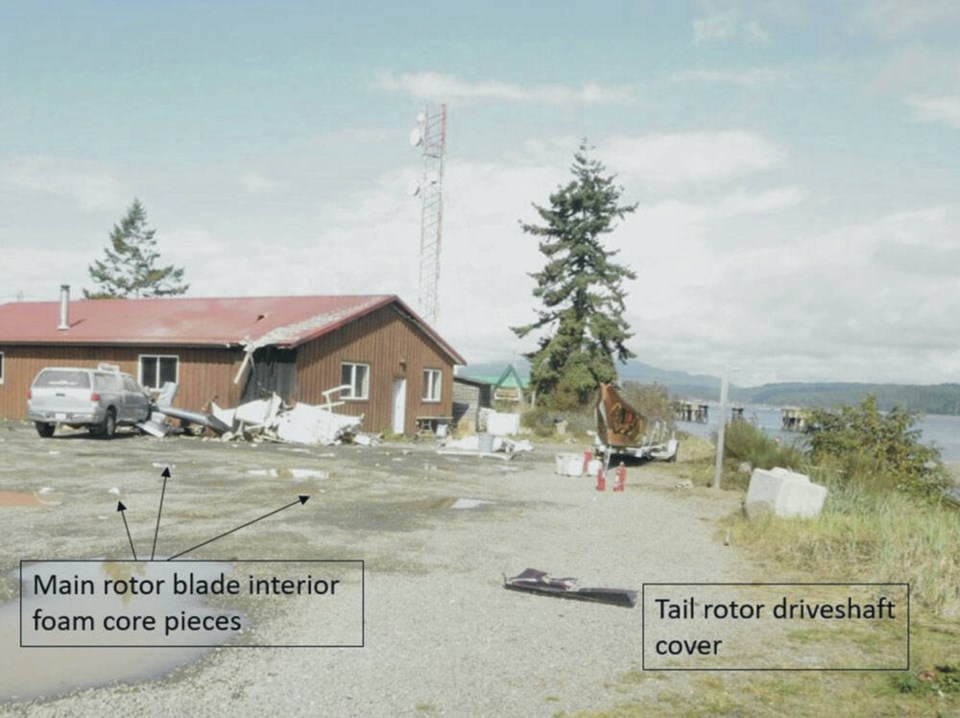A helicopter that crashed shortly after taking off from Campbell River Heliport three years ago, killing the pilot and lone occupant, had a faulty main rotor blade, the Transportation Safety Board says.
A TSB report released Thursday says the crash on Sept. 24, 2019, involved a Bell 206B owned and operated by E & B Helicopters that had been headed to Moat Lake. It was destroyed by the impact and post-crash fire.
The copter likely had engine trouble while cruising along the coastline at about 615 feet above sea level before the pilot decided to begin a descent. While turning right toward land, he lost control at about 200 feet and the helicopter plunged headlong into a building and two vehicles.
“The investigation found that an engine power anomaly likely occurred while the helicopter was in cruise flight and, as a result, the pilot reversed course and entered a descent consistent with an autorotation,” said the TSB report. “At some point during the flight, the main rotors became deformed.”
Evidence of fatigue in the rotors was found after the crash, but the degree to which the fatigue contributed to the deformation couldn’t be determined.
“In the last moments of the flight, likely as a result of the deformed blades, the main rotor r.p.m. decreased to a point that could not sustain autorotational flight, and the helicopter fell vertically and impacted the ground,” read the report.
Other factors that may have contributed to the crash are that the engine fuel system didn’t have the right accumulators or double-check valve installed, which should have been the case on a Bell 206 helicopter. It also found E & B didn’t have the right safety and maintenance regime in place for its aircraft, and failed to properly address a “partial loss of engine power” a week before the fatal crash.
“The pilot was the company’s owner, accountable executive and operations manager, and direction on how the maintenance department was to respond” to the engine issue came only from him, said the TSB.
The investigation also looked into the health of the pilot, and noted he was at high risk of a serious cardiac event that could have rendered him incapacitated while operating a helicopter. While a medical event didn’t ultimately cause the crash, the TSB said Transport Canada should have been made aware of the health risk under aviation guidelines.
>>> To comment on this article, write a letter to the editor: [email protected]



